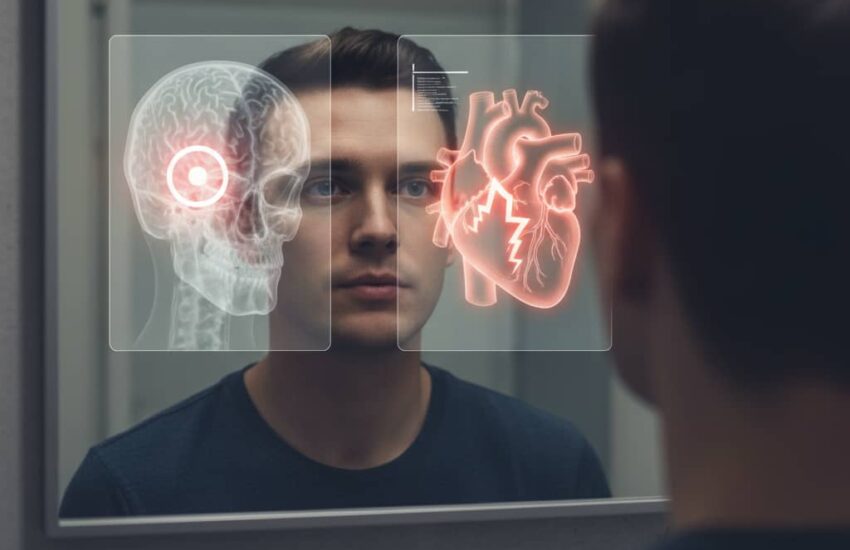Health anxiety can turn normal concern into overwhelming fear. Learn to recognize the signs, find coping strategies, and reclaim your peace of mind. The first time I truly understood health anxiety, I was sitting across from my friend Sarah as she described the MRI she’d demanded for a headache that lasted three days. “The doctor says it’s stress,” she told me, her hands trembling around her coffee cup. “But what if he’s missing something? What if it’s a tumor?” She’d already visited two urgent cares and spent hours researching symptoms online. Her fear was so palpable it felt like a third person at the table with us. That moment revealed how health anxiety isn’t about seeking attention, it’s about being trapped in a body that feels like it’s constantly betraying you.
Health anxiety exists on a spectrum. On one end, there’s normal health consciousness, getting a mole checked, following up on unusual symptoms. On the other end, there’s the relentless conviction that every bodily sensation signals catastrophe. What separates concern from disorder is the impairment: when checking, worrying, and seeking reassurance begins to dominate your life. The cruel irony is that the very behaviors intended to reduce anxiety, constant monitoring, doctor visits, internet searches, actually fuel it, creating a self-perpetuating cycle of fear and vigilance.
The digital age has transformed health anxiety into a different beast. Where previous generations might have worried in relative isolation, today’s health-anxious individuals can fall down rabbit holes of medical information and misinformation—at 2 AM. Dr. Google becomes both tormentor and false comfort, offering endless possibilities while providing no actual diagnosis. I’ve watched brilliant, logical people become convinced they have rare diseases because they matched three symptoms from a search result, despite having none of the risk factors or comprehensive clinical presentation.
The physical symptoms of anxiety often mimic the very diseases sufferers fear. Racing heart? Could be anxiety, or a heart condition. Shortness of breath? Panic attack, or pulmonary issue. This overlap creates a perfect storm where the fear response generates physical sensations that validate the fear, which intensifies the physical symptoms. Breaking this cycle requires recognizing that the body’s alarm system is malfunctioning, not that the threat is real.
Cognitive behavioral therapy offers powerful tools for rewiring this response. By challenging catastrophic thoughts (“This headache means I have a brain tumor”) and replacing them with balanced perspectives (“Headaches are common and usually harmless”), individuals gradually retrain their brains to default to reason rather than fear. Exposure therapy, gradually reducing avoidance behaviors like body checking or seeking reassurance, helps build tolerance to uncertainty. The goal isn’t to never think about health, but to restore health concerns to their proper proportion.
Mindfulness practices create space between sensation and reaction. Learning to observe bodily sensations without immediately interpreting them as threats can short-circuit the anxiety spiral. Rather than thinking “My heart is skipping beats—I’m having a heart attack,” mindfulness encourages “I notice my heart beating irregularly. This is a sensation I’ve had before that passed without incident.” This subtle shift from judgment to observation can dramatically reduce suffering.
Medication sometimes plays a role when anxiety becomes debilitating. SSRIs can help regulate the underlying neurochemistry that contributes to obsessive thoughts and physical anxiety symptoms. The decision to use medication is personal, but for some, it provides the stability needed to engage effectively in therapy and make lasting changes.

Lifestyle factors significantly impact health anxiety’s intensity. Regular sleep, balanced nutrition, caffeine reduction, and consistent exercise all help regulate the nervous system. I’ve seen clients reduce their anxiety symptoms by 50% simply by establishing a consistent sleep schedule and cutting back on coffee—interventions that seem simple but have profound neurological effects.
The support system’s role requires careful navigation. Well-meaning loved ones often either dismiss concerns (“You’re fine, stop worrying”) or enable anxiety by excessively accommodating reassurance-seeking behaviors. The most helpful approach validates the emotion without reinforcing the fear: “I understand you’re scared, and I’m here with you. What helps you when these thoughts come up?”
Setbacks are inevitable in recovery. The goal isn’t perfection but progress, gradually increasing the time between noticing a sensation and reacting with fear, slowly reducing internet searches, building confidence in handling health concerns appropriately. I remind clients that healing isn’t linear; a bad week doesn’t erase months of progress.
Perhaps the most profound shift comes when individuals realize that seeking absolute certainty about their health is impossible and that learning to tolerate uncertainty is the actual path to peace. No amount of testing, scanning, or doctor visits can guarantee perfect health forever. The real security comes not from eliminating risk, but from developing the resilience to face life’s inherent uncertainties without being consumed by fear.
Health anxiety robs people of the present moment by keeping them trapped in fearful anticipation of the future. Recovery involves reclaiming that present, learning to live in the body you have today, with its ordinary sensations and imperfections, rather than the catastrophic future your anxiety imagines. It’s about transforming your relationship with your body from adversary to ally, and rediscovering the life that exists beyond the fear.
References
Healthline. (2017, October 19). Health anxiety (hypochondria): Symptoms and treatments. Retrieved from https://www.healthline.com/health/health-anxiety
This Way Up. (2014, December 31). Health anxiety | Symptoms & treatment explained. Retrieved from https://thiswayup.org.au/health-anxiety-explained
Mayo Clinic. (2021, April 18). Illness anxiety disorder – Diagnosis and treatment. Retrieved from https://www.mayoclinic.org/diseases-conditions/illness-anxiety-disorder/diagnosis-treatment/drc-20373787
Cleveland Clinic. (2025, June 1). Illness anxiety disorder (hypochondria). Retrieved from https://my.clevelandclinic.org/health/diseases/9886-illness-anxiety-disorder-hypochondria-hypochondriasis
NHS. (2025, April 30). Health anxiety. Retrieved from https://www.nhs.uk/mental-health/conditions/health-anxiety/

